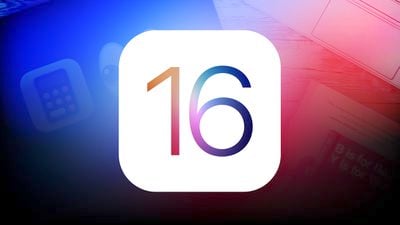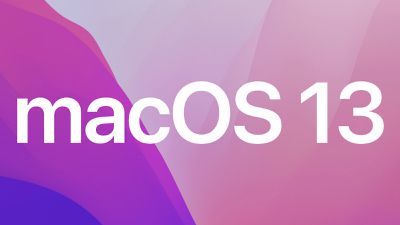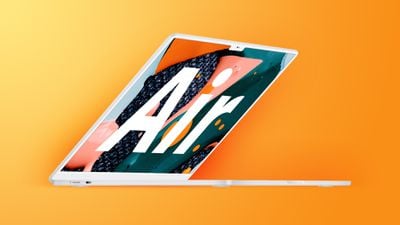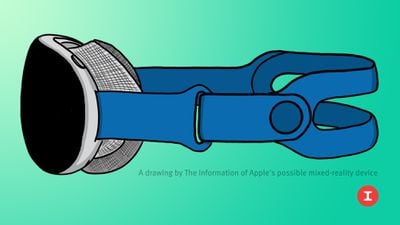Apple's 33rd annual Worldwide Developers Conference is set to kick off on Monday, June 6 at 10:00 a.m. Like the 2020 and 2021 events, it will be held in a digital-only capacity, so it is free for all developers worldwide to attend.
The keynote event will give us our first look at new operating system updates, including iOS 16, iPadOS 16, macOS 13, tvOS 16, and watchOS 9, plus rumors suggest we could see some new hardware. Everything we've heard about this year's event is outlined below.
iOS 16
Most of the rumors about iOS 16 have been vague, so we know little about the operating system update at this time. In years past, new versions of iOS have leaked out early and have given us insight into the feature set that's coming, but that didn't happen this year.

That said, we have heard some rumors about what to expect, with much of the information sourced from Bloomberg's Mark Gurman, who has reliable sources with information on Apple's plans.
Rumored New Features
- Overhauled Lock screen with wallpapers that have "widget-like capabilities."
- There will be "significant" improvements to notifications, though we don't know specific details.
- Messages app with "social network-like functionality" with a specific focus on audio messages.
- Health app with expanded sleep tracking functionality and medicine management. Apple is working on a tool that will let users scan their pill bottles into the app, plus there are new women's health features expected.
- Fresh Apple apps are in the works, with no more specific information.
- Apple is also working on "new ways of system interaction," but it's not quite clear what that means.
- New Fitness+ workout types.
- Apple Music classical app with interface based on Primephonic, an app Apple acquired in 2021.
Possible Features Based on iPhone 14 Rumors
- Always-on display for iPhone 14 Pro and Pro Max (not coming until September).
- Likely revamped status bar interface for iPhone 14 Pro and Pro Max to accommodate hole punch and pill design that is expected to replace the notch on those devices.
- The iPhone 14 models are expected to get a car crash detection feature, which would dial emergency services automatically when a collision is detected. This would require new iOS 16 functionality.
- Apple may also add a satellite-based emergency feature to the iPhone 14 models, which would be supported in iOS 16. This feature would let iPhones send texts in emergency situations when there is no cellular coverage, and report major emergencies when coverage is not available.
- iOS 16 could include support for the buy now, pay later feature for Apple Pay that Apple is developing.
- Similarly, it could introduce support for the hardware subscription program that will let customers pay a monthly fee for an iPhone, iPad, or Mac.
For more on what we're expecting in iOS 16, we have a dedicated iOS 16 roundup.
iPadOS 16
iPadOS 16 will get many of the new features that are introduced in iOS 16, but Apple is also working on additional functionality that's iPad specific.
With iPadOS 16, Apple is aiming to make the iPad behave more like a laptop than a smartphone, and the new iPad software will be one of the biggest updates announced at WWDC.
The update will feature a redesigned multitasking interface that makes it easier to swap between tasks and see which apps are open, plus it will allow users to resize windows. Apple also plans to implement new ways for users to deal with multiple apps at once, in what sounds like a much more Mac-like multitasking experience.
macOS 13
We don't know much about the feature set coming to macOS 13, as there have been few leaks. It is rumored to feature an overhauled System Preferences interface that will bring it more in line with the Settings app on iPhone and iPad, with the update to include individual settings organized by app.

Apple is also expected to revamp some of the default apps, so we could see improvements to Messages, Mail, Safari, and more. Messages in particular is rumored to be getting social network-like functionality with enhancements to audio messages. That's an iOS 16 rumor, but Messages usually has feature parity across platforms.
As for naming, macOS 13 could be macOS Mammoth, based on Apple trademark filings. Apple way back in 2013 registered trademarks for many California landmarks and Mammoth is the one that's been kept active the longest, though its status is unknown at this time and Apple has in the past chosen some names that were never on that list, so the naming isn't certain.
watchOS 9
watchOS 9 will have some updates that impact the day-to-day operation and navigation on the wrist-worn device.
- Updated power saving mode that will allow for the use of apps and features while cutting down on battery usage.
- Expanded atrial fibrillation detection feature with added "burden," aka how often a person is in a state of atrial fibrillation across a period of time.
- Improved health and activity tracking.
- More workout types.
- Additional metrics for running workouts.
- Refresh for existing watch faces.
tvOS 16
tvOS doesn't often get as many new features as other operating system updates, and we don't know a lot about tvOS 16, but it is rumored to include new smart home tie-ins. You may be able to do more with your smart home products through the Apple TV following the launch of the update.
Hardware Possibilities
The past several WWDC events have focused solely on software and have not included hardware announcements, so it's not yet clear if we're going to see any hardware unveiled at this year's event. If we do, the below listed devices are the most likely candidates.
MacBook Air
If Apple does plan to introduce new Macs at the event, the MacBook Air is the device we're likely to see, according to Bloomberg's Mark Gurman. Apple is reportedly "aiming" to introduce the MacBook Air at the event, but COVID-related supply chain issues in China could prevent Apple from doing so.

The next-generation MacBook Air is expected to feature a total design overhaul with a MacBook Pro-like shape that does away with the tapered body. It will be thinner and lighter, and it is expected to come in multiple colors, including space gray, silver, a champagne color, and blue. The MacBook Air is expected to feature slim off-white bezels and a matching off-white keyboard, and it could be around 13.6 inches in size.
The MacBook Air will probably be equipped with a next-generation M2 chip, which is expected to feature the same number of computing cores as the M1 (eight), but it will include speed improvements that make it marginally faster. It is also rumored to have improved graphics with nine or 10 GPU cores, up from seven or eight in the current M1 MacBook Air.
The M2 chip will be the first upgrade to the M1-series chips that Apple has been using in Apple silicon devices to date. Though many rumors have suggested the MacBook Air will feature an M2 chip, Apple analyst Ming-Chi Kuo believes that Apple could focus on the redesign rather than new chip technology.
He has said the next-generation TSMC N3 and N4P fabrication processes will not be ready for mass production until 2023, so Apple will only be able to introduce an iterative update expected to use the same N5P chip used for the A15 and the M1.
More on the next-generation MacBook Air can be found in our 2022 MacBook Air guide.
Mac Pro
Back in 2019, the redesigned modular Mac Pro was shown off at WWDC ahead of its late 2019 launch, and there's a possibility that we could see a similar unveiling this year.

Apple's hardware engineering chief John Ternus confirmed at the spring event that there is an Apple silicon version of the Mac Pro in the works, and it is expected to be coming at some point in 2022.
Apple could perhaps give us a small preview of the Mac Pro ahead of a launch coming later in the year.
Rumors suggest the Mac Pro will feature a chip even more powerful than the M1 Ultra used in the Mac Studio. It is expected to feature up to 40 CPU cores and 128 graphics cores, which would make it twice as powerful as the M1 Ultra.
Apple could introduce an M1 Ultra successor that is in fact two M1 Ultra chips linked together, as the M1 Ultra itself is essentially two connected M1 Max chips. If that's the case, the upcoming Mac Pro chip will be four times as powerful as the M1 Max.
AR/VR Headset?
There were rumors last year that Apple's long-rumored AR/VR headset could see an introduction at the 2022 Worldwide Developers Conference, but it looks like that's not going to happen.

Bloomberg's Mark Gurman and Apple analyst Ming-Chi Kuo have said that the headset is simply not ready to be introduced at this point in time, as Apple still has kinks to work out. Kuo believes that Apple will launch the headset in 2023, and Gurman has said that Apple does not have plans for a "full-blown announcement" of the headset at WWDC.
That said, a trademark for "realityOS," the operating system for the headset, was discovered recently, and it features a foreign filing date deadline of June 8, 2022. That's a legal requirement, and it appears that the date is unrelated to WWDC and is a coincidence.
MacRumors Coverage
Apple plans to live stream the WWDC keynote on its website, the Apple TV app, and YouTube, but for those unable to watch, we'll be covering the event on MacRumors.com and through the MacRumorsLive Twitter account.
We'll also have in-depth coverage of all of Apple's announcements throughout the rest of the week and going forward as we test the new software.























